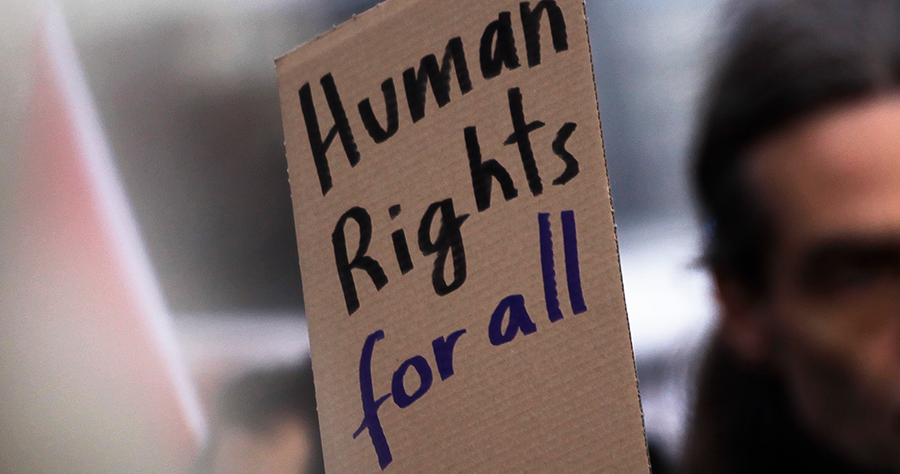The most important lesson which was learnt as a result of Second World War was the realization by the Governments of various countries about the human dignity which needed to be cherished and protected. It is for this reason that in the U.N. Charter, 1945, adopted immediately after the Second World War, dignity of the individuals was mentioned as of core value. The almost contemporaneous Universal Declaration of Human Rights (1948) echoed same sentiments.
Empowerment of the people through human development is the aim of human rights.
The underlined message in the aforesaid documents is the acknowledgment that human rights are individual and have a definite linkage of human development, both sharing common vision and with a common purpose. Respect for human rights is the root for human development and realization of full potential of each individual, which in turn leads to the augmentation of human resources with progress of the nation.
Human Rights exist because human exist
There is thus a universal recognition that human rights are rights that belong to every person, and do not depend on the specifics of the individual or the relationship between the right-holder and the right- grantor. Moreover, human rights exist irrespective of the question whether they are granted or recognized by the legal and social system within which we live. They are devices to evaluate these existing arrangements: ideally, these arrangements should not violate human rights. In other words, human rights are moral, pre-legal rights. They are not granted by people nor can they be taken away by them.
International Human Rights Law
In international human rights law, equality is found upon two complementary principles: non-discrimination and reasonable differentiation.
The principle of non-discrimination seeks to ensure that all persons can equally enjoy and exercise all their rights and freedoms. Discrimination occurs due to arbitrary denial of opportunities for equal participation. For example, when public facilities and services are set on standards out of the reach of the TGs, it leads to exclusion and denial of rights.
Equality not only implies preventing discrimination (example, the protection of individuals against unfavourable treatment by introducing anti- discrimination laws), but goes beyond in remedying discrimination against groups suffering systematic discrimination in society. In concrete terms, it means embracing the notion of positive rights, affirmative action and reasonable accommodation.
Universal Declaration of Human Rights
Nevertheless, the Universal Declaration of Human Rights recognizes that all human beings are born free and equal in dignity and rights and, since the Covenants provisions apply fully to all members of society, persons with disabilities are clearly entitled to the full range of rights recognized in the Covenant. Moreover, the requirement contained in Article 2 of the Covenant that the rights enunciated will be exercised without discrimination of any kind based on certain specified grounds or other status clearly applies to cover persons with disabilities.
Human Rights in India
India attained independence within two years of adoption of the aforesaid U.N. Charter and it was but natural that such a Bill of Rights would assume prime importance insofar as thinking of the members of the Constituent Assembly goes. It in fact did and we found chapter on fundamental rights in Part-III of the Constitution.
In addition to the fundamental rights, Constitution makers also deemed it proper to impose certain obligations on the State in the form of Directive Principles of State Policy (Part-IV) as a mark of good governance. It is this part which provides an ideal and purpose to our Constitution and delineates certain principles which are fundamental in the governance of the country.
Dr.Ambedkar had explained the purpose of these Directive Principles in the following manner (See Constituent Assembly debates):
“The Directive Principles are like the Instruments of Instructions which were issued to the Governor-General and the Governors of Colonies, and to those of India by the British Government under the 1935 Government of India Act. What is called Directive Principles is merely another name for the Instrument of Instructions. The only difference is that they are instructions to the legislature and the executive. Whoever capture power will not be free to do what he likes with it. In the exercise of it he will have to respect these instruments of instructions which are called Directive Principles.”
The basic spirit of our Constitution is to provide each and every person of the nation equal opportunity to grow as a human being, irrespective of race, caste, religion, community and social status.
Granville Austin while analyzing the functioning of Indian Constitution in first 50 years has described three distinguished strands of Indian Constitution:
(i) protecting national unity and integrity,
(ii) establishing the institution and spirit of democracy; and
(iii) fostering social reforms.
The Strands are mutually dependent, and inextricably intertwined in what he elegantly describes as a seamless web. And there cannot be social reforms till it is ensured that each and every citizen of this country is able to exploit his/her potentials to the maximum. The Constitution, although drafted by the Constituent Assembly, was meant for the people of India and that is why it is given by the people to themselves as expressed in the opening words We the People. What is the most important gift to the common person given by this Constitution is fundamental rights which may be called Human Rights as well.
Reference
National Legal Service Authority v. Union of India, (2014)
